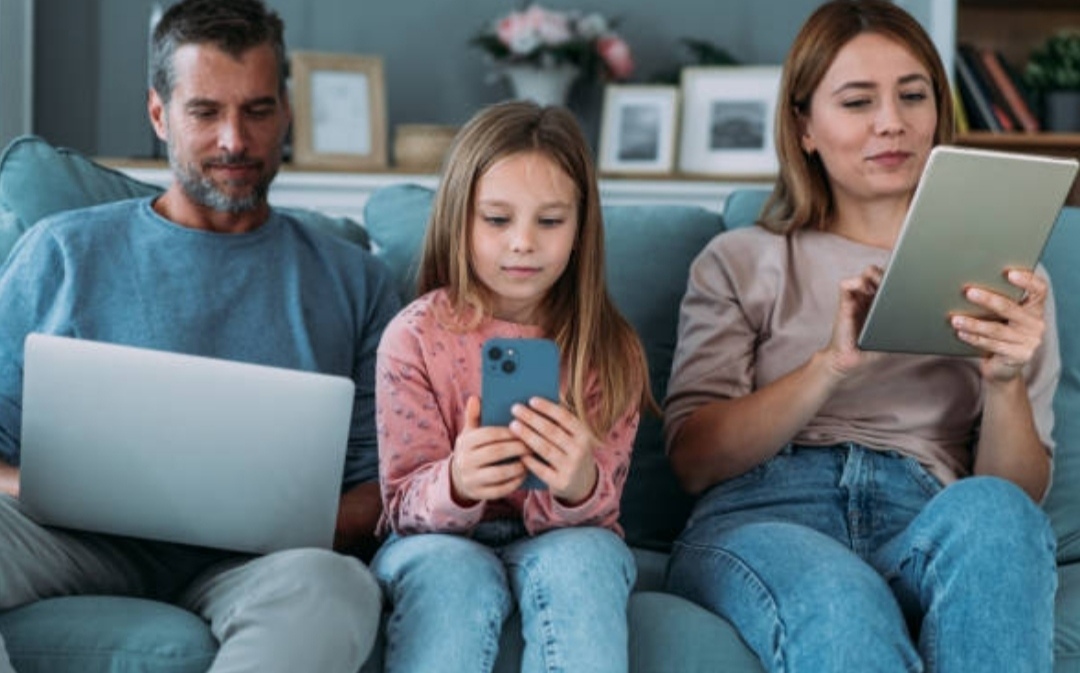Managing Screen Time Effectively

The Prevalence of Screen Time in Modern Life
How to Manage Screen Time Effectively?
In today’s fast-paced digital world, screens have become an inseparable part of daily life.
From the moment we wake up to the time we go to bed, we are constantly surrounded by screens—whether it’s smartphones, tablets, laptops, or televisions.
According to recent studies, the average person spends over 7 hours per day on screens, a number that has been steadily increasing with the rise of remote work, social media, and streaming platforms.
While technology has made life more convenient, excessive screen time has significant downsides.
It affects physical health, mental well-being, and productivity, making it crucial to find a balance.
Here are some of the most common ways people are engaged with screens daily:
- Work and Productivity: Many jobs require employees to sit in front of a screen for extended hours. Remote work and hybrid jobs have further increased digital dependence.
- Entertainment: Streaming services like Netflix, YouTube, and gaming consoles keep people engaged for hours.
- Social Media Addiction: Platforms like Instagram, TikTok, and Facebook are designed to grab attention and encourage continuous scrolling.
- Online Shopping and Browsing: With just a few clicks, people spend hours browsing e-commerce stores, reading reviews, and making purchases.
- Communication and Messaging: Video calls, texting, and social media chats make it easy to stay connected but also increase screen exposure.
With so much screen time integrated into daily routines, many people struggle to disconnect.
This raises a critical question: How can we manage screen time effectively without sacrificing productivity or entertainment?
The Impact of Excessive Screen Time on Health and Productivity
While screens provide convenience, excessive screen time can take a serious toll on your health and overall well-being.
Here’s a closer look at how it affects different aspects of life:
Physical Health Risks of Too Much Screen Time
- Digital Eye Strain (Computer Vision Syndrome):
- Staring at screens for extended periods can cause eye strain, dryness, blurred vision, and headaches.
- The blue light emitted by screens contributes to fatigue and discomfort.
- Following the 20-20-20 rule (looking at something 20 feet away for 20 seconds every 20 minutes) can help reduce strain.
- Staring at screens for extended periods can cause eye strain, dryness, blurred vision, and headaches.
- Poor Posture and Musculoskeletal Issues:
- Sitting hunched over a laptop or phone can lead to neck pain, back pain, and poor spinal alignment.
- Long hours of screen use without movement contribute to repetitive strain injuries (RSI).
- Using an ergonomic chair and adjusting screen height can prevent posture-related problems.
- Sitting hunched over a laptop or phone can lead to neck pain, back pain, and poor spinal alignment.
- Disrupted Sleep Patterns (Blue Light Exposure):
- Screens emit blue light, which interferes with melatonin production, making it harder to fall asleep.
- Watching TV or scrolling on a phone before bed reduces sleep quality and increases the risk of insomnia.
- To improve sleep, reduce screen time at least 1 hour before bedtime and use “night mode” on devices.
- Screens emit blue light, which interferes with melatonin production, making it harder to fall asleep.
Mental Health Effects of Excessive Screen Time
- Increased Anxiety and Stress:
- Overuse of social media often leads to comparison, anxiety, and low self-esteem.
- Doomscrolling (constantly consuming negative news online) increases stress levels.
- Taking social media breaks and limiting news consumption can improve mental health.
- Overuse of social media often leads to comparison, anxiety, and low self-esteem.
- Reduced Attention Span and Productivity:
- Constant notifications and digital distractions make it hard to focus on tasks.
- Multitasking on multiple screens leads to mental fatigue and decreased efficiency.
- Using focus apps or turning off non-essential notifications can help maintain concentration.
- Constant notifications and digital distractions make it hard to focus on tasks.
- Social Isolation and Reduced Real-Life Interactions:
- Excessive screen time reduces face-to-face communication, leading to weaker relationships.
- Spending too much time online can make people feel lonely and disconnected from the real world.
- Setting screen-free times for family dinners or outings can strengthen relationships.
- Excessive screen time reduces face-to-face communication, leading to weaker relationships.
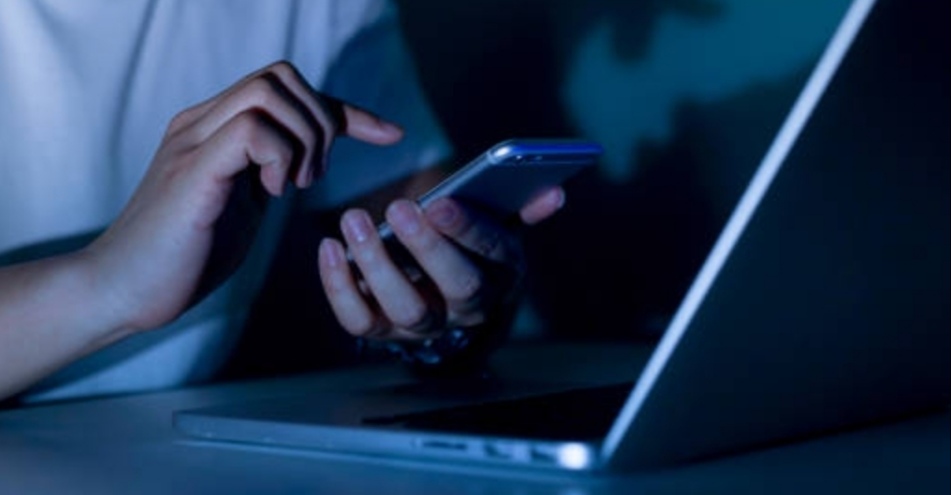
The Productivity Trap – How Screens Drain Time and Energy
Many people underestimate how much time they spend on screens.
A quick five-minute scroll on social media can easily turn into hours of wasted time, affecting productivity.
Common productivity killers include:
- Social Media Loops: Opening Instagram, then checking Facebook, then Twitter, and repeating the cycle mindlessly.
- Streaming Binge-Watching: Watching “just one more episode” turns into an all-night binge session.
- Gaming Addiction: Many video games are designed to keep players engaged for long hours with endless content.
- Email Overload: Constantly checking and responding to emails instead of focusing on important tasks.
Studies show that employees who take frequent screen breaks are more productive than those who work nonstop in front of a computer.
By managing screen time effectively, you can improve focus, get more done, and have more free time for meaningful activities.
Why Learning How to Manage Screen Time Effectively Is Essential
In today’s digital landscape, reducing screen time is not about eliminating technology but about using it more intentionally.
- Instead of mindless scrolling, set time limits on social media apps.
- Instead of binge-watching TV, replace it with an outdoor activity or hobby.
- Instead of late-night screen use, develop a healthy bedtime routine without screens.
By implementing smart screen habits, you can experience:
✅ Better physical health – Less eye strain, improved posture, and better sleep.
✅ Stronger mental health – Reduced anxiety, better focus, and more real-life interactions.
✅ Higher productivity – Less digital distraction and more meaningful work completed.
✅ More free time – Spending less time on screens opens up space for hobbies, family, and self-care.
It’s time to take control of your screen habits!
Start by tracking your daily screen time and setting small, achievable goals to reduce digital overuse.
Your health, productivity, and relationships will thank you!
Understanding Screen Time and Its Effects
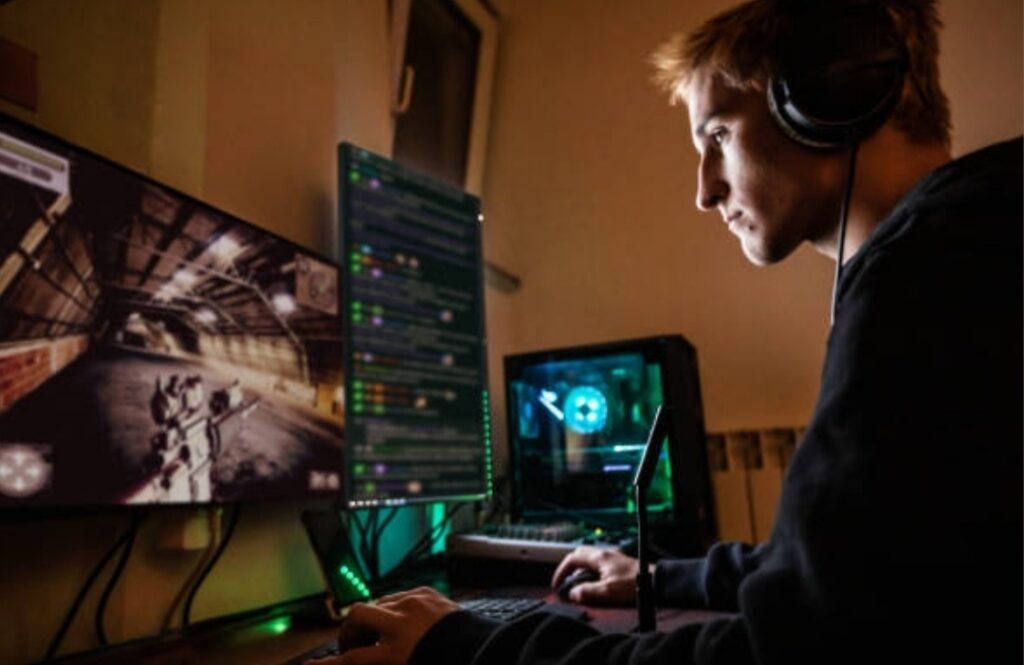
What Is Screen Time?
Screen time refers to the total amount of time a person spends interacting with digital screens, including smartphones, tablets, computers, televisions, and gaming consoles.
It includes all activities performed on these devices, such as working, browsing, watching videos, playing games, and using social media.
There are different types of screen time, categorized based on how they impact an individual’s well-being:
- Passive Screen Time: Watching TV, streaming movies, or scrolling through social media without much engagement.
- Active Screen Time: Engaging in activities that require interaction, such as online learning, video conferencing, or creative content creation.
- Recreational Screen Time: Using digital devices for entertainment, including video games, YouTube, and social media browsing.
- Work-Related Screen Time: Spending long hours on a computer for professional tasks, remote work, or business management.
- Educational Screen Time: Using screens for learning, such as attending online classes, reading e-books, or researching information.
Why Does Screen Time Matter?
With technology becoming an essential part of daily life, the average person now spends over 7 hours per day on screens.
While screen time is unavoidable in the modern world, excessive screen usage can lead to serious health concerns.
Understanding how to manage screen time effectively is crucial to maintaining a healthy balance between digital activities and real-world interactions.
The Impact of Excessive Screen Time
Too much screen time doesn’t just affect our eyes—it impacts our physical health, mental well-being, and cognitive abilities.
Let’s take a deeper look at the risks associated with excessive screen use.
Physical Health Issues Caused by Screen Overuse
- Digital Eye Strain and Computer Vision Syndrome
- Prolonged screen exposure causes dry eyes, blurred vision, headaches, and eye fatigue.
- The blue light emitted by screens leads to visual discomfort and difficulty focusing.
- Studies show that more than 50% of people experience digital eye strain due to excessive screen usage.
- To reduce eye strain, follow the 20-20-20 rule: Every 20 minutes, look at something 20 feet away for 20 seconds.
- Prolonged screen exposure causes dry eyes, blurred vision, headaches, and eye fatigue.
- Poor Posture and Increased Risk of Musculoskeletal Disorders
- Many people develop text neck syndrome, caused by bending their heads forward while using smartphones.
- Sitting for long periods leads to back pain, shoulder stiffness, and poor spinal alignment.
- Incorrect screen height contributes to chronic neck and lower back pain.
- Using ergonomic desks, proper chair support, and standing desks can help improve posture.
- Many people develop text neck syndrome, caused by bending their heads forward while using smartphones.
- Disrupted Sleep Patterns and Insomnia
- Blue light exposure before bedtime interferes with melatonin production, making it harder to sleep.
- People who spend time on screens late at night experience delayed sleep onset, poor sleep quality, and daytime fatigue.
- To improve sleep, use night mode on devices, reduce screen time at night, and avoid screens 1 hour before bed.
- Blue light exposure before bedtime interferes with melatonin production, making it harder to sleep.
Mental Health Concerns Linked to Excessive Screen Use
- Increased Anxiety and Depression
- Studies suggest that higher screen time is associated with increased stress and depressive symptoms.
- Social media addiction leads to constant comparison, fear of missing out (FOMO), and feelings of inadequacy.
- Excessive gaming and binge-watching can cause social withdrawal and loneliness.
- Limiting social media use and practicing mindful screen habits can improve mental well-being.
- Studies suggest that higher screen time is associated with increased stress and depressive symptoms.
- Reduced Attention Span and Productivity
- Constant exposure to short-form content (e.g., TikTok, Instagram Reels) reduces the ability to focus on long-term tasks.
- Multitasking on multiple screens (such as working on a laptop while checking a phone) lowers productivity and increases cognitive overload.
- Using focus apps, turning off notifications, and scheduling screen breaks can help regain concentration.
- Constant exposure to short-form content (e.g., TikTok, Instagram Reels) reduces the ability to focus on long-term tasks.

Scientific Studies on the Negative Effects of Excessive Screen Time
Numerous studies highlight the detrimental impact of prolonged screen exposure:
- A study published in the Journal of the American Medical Association (JAMA) found that children who spend more than 7 hours per day on screens experience thinning of the brain’s cortex, affecting critical thinking and reasoning skills.
- Research from Harvard Medical School states that blue light exposure at night suppresses melatonin by up to 50%, leading to poor sleep quality.
- The American Psychological Association (APA) reports that social media addiction increases anxiety and depression rates, especially among teenagers and young adults.
- A Stanford University study found that excessive screen use contributes to reduced gray matter density in the brain, affecting memory and learning abilities.
Why Managing Screen Time Is Essential
With digital devices playing a central role in work, education, and entertainment, reducing screen time is not about eliminating technology altogether.
Instead, it’s about using screens in a healthier and more intentional way.
By learning how to manage screen time effectively, you can:
✅ Improve sleep quality and reduce the risk of insomnia.
✅ Enhance focus and productivity by minimizing digital distractions.
✅ Protect your eyes from strain and discomfort.
✅ Reduce stress and anxiety by cutting down on excessive social media use.
✅ Strengthen real-life relationships by being more present in social interactions.
Are you ready to take control of your screen habits?
Start by tracking your daily screen time and setting small goals to reduce unnecessary screen use.
Your mind and body will thank you for it!
Assessing Your Screen Time Usage
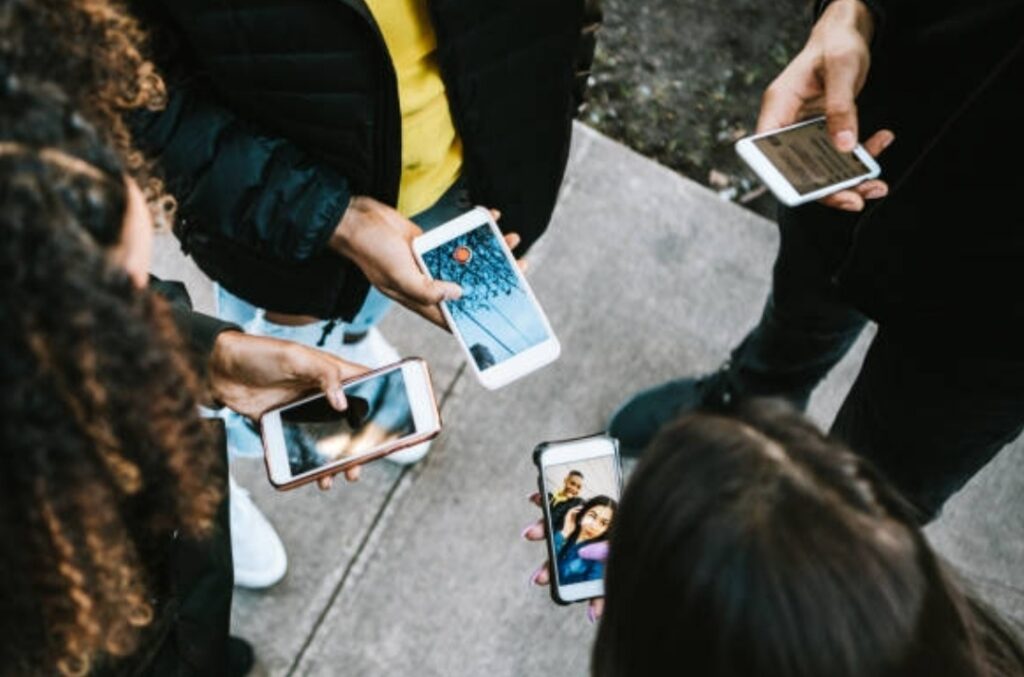
Tracking Screen Time
Understanding your screen time habits is the first step to controlling and reducing excessive device usage.
Many people underestimate the number of hours they spend on screens, making it essential to use tracking tools to get a clear picture of daily screen activity.
Best Tools and Apps to Monitor Screen Time
There are numerous apps and built-in features designed to track screen time across different devices.
These tools provide detailed reports, allowing users to analyze their digital habits and make necessary adjustments.
Here are some of the best screen time monitoring tools for different platforms:
✅ For iPhone & iPad:
- Screen Time (iOS) – Apple’s built-in feature that tracks app usage, notifications, and device pickups.
- Forest – A productivity app that helps users focus by limiting screen time through gamification.
✅ For Android Devices:
- Digital Wellbeing (Android) – Google’s built-in tool that tracks app usage and allows users to set limits.
- StayFree – A detailed tracking app that provides analytics and usage insights.
✅ For Windows & Mac:
- RescueTime – A powerful time management app that tracks how much time you spend on websites and apps.
- Cold Turkey – A website and app blocker that helps users stay productive by restricting distracting content.
✅ For Parents Monitoring Kids’ Screen Time:
- Qustodio – A parental control app that tracks children’s screen time and allows content filtering.
- Bark – Monitors children’s online activities while providing insights into potential screen addiction.
How to Interpret Screen Time Reports
Once you’ve installed a screen time tracker, the next step is analyzing the data.
Most apps will show:
- Total screen time per day or week
- Time spent on specific apps (e.g., social media, streaming services, or work-related apps)
- Number of phone pickups and notifications received
- Comparison of screen time trends over time
When interpreting your screen time reports, look for patterns and warning signs, such as:
- Excessive time on entertainment apps (e.g., YouTube, TikTok, Instagram)
- Frequent phone pickups disrupting work or sleep
- Prolonged screen usage before bedtime, leading to sleep issues
- A noticeable increase in screen time over time
By understanding these insights, you can set goals to reduce unnecessary screen usage and create a healthier digital balance.

Identifying Problematic Usage
While some screen time is necessary for work, education, and communication, excessive screen time can become a serious problem.
It’s important to recognize when digital device usage starts affecting daily life, productivity, and mental well-being.
Signs of Excessive Screen Time
If you notice any of the following warning signs, it may be time to reassess your digital habits:
❌ Neglecting Responsibilities:
- Missing deadlines due to excessive social media scrolling or binge-watching.
- Procrastinating on important tasks because of excessive phone use.
❌ Declining Social Interactions:
- Prioritizing screen time over in-person relationships.
- Feeling anxious when away from digital devices.
❌ Physical Health Issues:
- Experiencing frequent headaches, neck pain, or eye strain.
- Sleep disturbances due to late-night screen use.
❌ Decreased Productivity:
- Constantly switching between apps, reducing focus on important work.
- Struggling to complete tasks without checking a phone or computer.
Real-Life Examples of Screen Time Addiction
Case Study 1: Social Media Overuse Impacting Mental Health
Emma, a 23-year-old student, used to spend only 2 hours a day on social media.
Over time, she developed the habit of checking her phone every few minutes, eventually spending 6-7 hours daily on Instagram and TikTok.
As a result, she experienced anxiety, poor sleep quality, and difficulty concentrating on studies.
By tracking her screen time and setting daily limits, she successfully reduced her usage and improved her mental well-being.
Case Study 2: Work Productivity Affected by Digital Distractions
John, a remote worker, found himself constantly switching between work tasks and entertainment apps
Despite working 8 hours a day, he struggled to complete his projects on time due to frequent distractions.
By using productivity apps like RescueTime and Cold Turkey, he regained focus and increased efficiency.
Taking the First Step Towards Healthier Screen Time Habits
Recognizing problematic screen time behavior is the first step toward making positive changes.
Start by tracking your daily usage, setting screen time limits, and creating a balance between online and offline activities.
✅ Ready to regain control of your digital habits?
Set a goal today to reduce unnecessary screen time and build healthier routines!
Strategies to Manage Screen Time Effectively
Managing screen time is essential for maintaining a healthy balance between digital and offline life.
With screens being a major part of work, education, and entertainment, it’s important to develop effective strategies to control usage and reduce digital distractions.
Below are proven strategies to help you manage screen time effectively and build healthier habits.
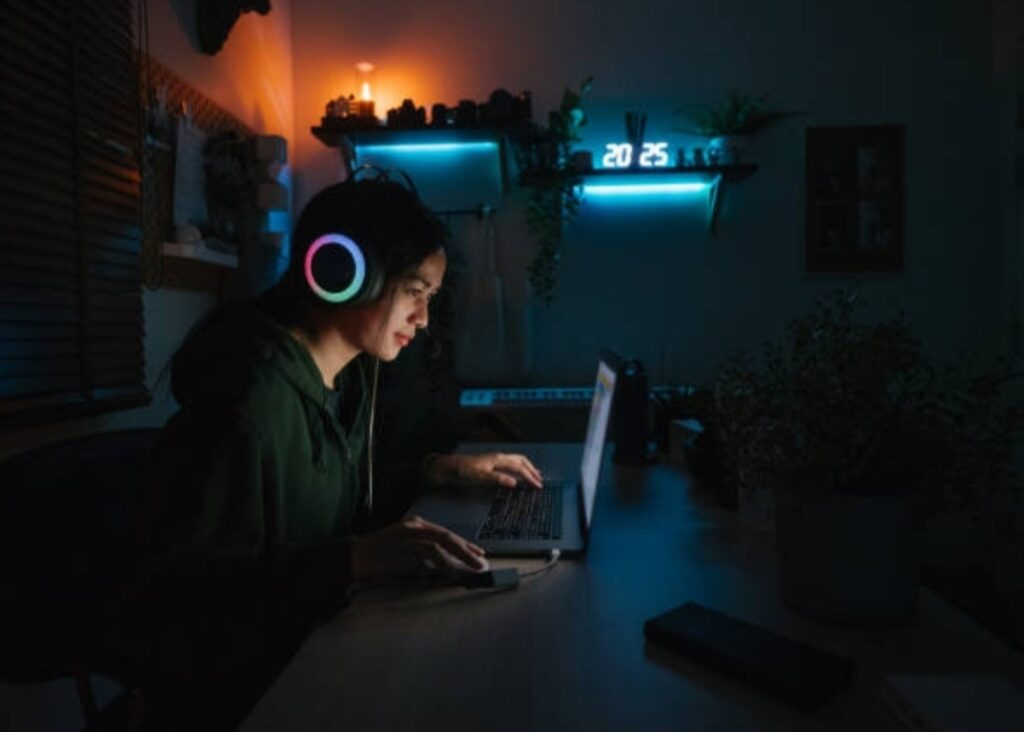
Set Realistic Goals and Limits
One of the most effective ways to control screen time is by setting realistic and achievable goals.
This helps prevent excessive digital consumption while ensuring you use devices productively.
How to Set Daily or Weekly Screen Time Limits
Start by assessing your current screen time habits using tracking tools like:
- Screen Time (iOS) or Digital Wellbeing (Android) for smartphone users
- RescueTime or Cold Turkey for computer users
Once you understand your usage, create clear limits based on your lifestyle:
✅ Work: Limit unnecessary browsing and social media use during working hours.
✅ Leisure: Set daily entertainment limits for apps like YouTube, TikTok, or Netflix.
✅ Social Media: Reduce mindless scrolling by using app timers.
✅ Bedtime: Avoid screens at least one hour before sleep for better rest.
Using Device Settings to Enforce Limits
Most modern devices come with built-in settings to enforce screen time restrictions.
Here’s how you can set up these limits:
- iOS & Android: Use app limits and downtime features.
- Windows & Mac: Enable focus mode and use productivity extensions.
- Smart TVs: Set viewing limits on streaming platforms.
Setting these limits automates the process, making it easier to stick to your screen time goals.
Create Screen-Free Zones and Times
One of the best ways to cut down screen time is by designating specific areas and times where devices are not allowed.
How to Establish Screen-Free Zones
Creating screen-free areas in your home helps reduce unnecessary digital distractions and encourages face-to-face interactions.
Examples of screen-free zones:
- Dining Area: No screens during meals to promote real conversations.
- Bedrooms: Keep screens out of the bedroom to improve sleep quality.
- Workspaces: Reduce phone use in your workspace for better productivity.
Implementing Screen-Free Time Periods
Setting specific times for no screen usage can greatly improve mental and physical health.
Ideal screen-free time periods:
✅ During Meals: Focus on mindful eating and family bonding.
✅ One Hour Before Bedtime: Reduce blue light exposure for better sleep.
✅ Early Mornings: Start the day without screens to enhance focus.
✅ Before Social Events: Be fully present during in-person interactions.
These small changes can lead to major improvements in digital wellness.
Turn Off Non-Essential Notifications
Constant notifications are one of the biggest reasons why people mindlessly check their phones.
Disabling unnecessary alerts helps reduce distractions and regain focus.
How to Reduce Notification Overload
To minimize digital interruptions, follow these steps:
✅ Turn off social media notifications (Facebook, Instagram, Twitter).
✅ Disable non-essential app alerts (shopping apps, news apps).
✅ Use “Do Not Disturb” mode during work and sleep hours.
✅ Enable Focus Mode (available on most smartphones) to block distractions.
The Benefits of Focus Modes on Smartphones
Focus modes allow users to filter out distractions and prioritize important tasks.
Popular focus modes:
- Work Mode: Blocks social media and entertainment apps.
- Sleep Mode: Silences all notifications for uninterrupted rest.
- Personal Mode: Limits work-related notifications after hours.
By customizing focus settings, you can gain better control over your digital habits.

Engage in Alternative Activities
A great way to reduce screen time is by engaging in hobbies that don’t involve digital devices.
Finding enjoyable offline activities helps naturally replace screen addiction.
Best Offline Activities to Reduce Screen Dependence
✅ Reading Books: Develops knowledge and enhances imagination.
✅ Outdoor Exercise: Running, cycling, or yoga improves physical and mental health.
✅ Creative Arts & Crafts: Drawing, painting, or DIY projects provide stress relief.
✅ Music & Instrument Practice: Learning an instrument can be both fun and productive.
✅ Socializing in Person: Spend quality time with family and friends.
Why Physical Activity Helps Reduce Screen Time
Physical activities not only replace screen time but also boost overall well-being.
Benefits of staying active include:
- Reduced stress and anxiety
- Improved focus and concentration
- Better posture and reduced eye strain
- Increased energy and motivation
Making an effort to incorporate these activities into daily life can significantly cut down unnecessary screen exposure.
Practice Mindfulness and Intentional Use
Being conscious of screen usage helps prevent mindless scrolling and unnecessary digital distractions.
The key is to be intentional about how and why you use screens.
How to Be More Intentional With Screen Time
- Ask Yourself: “Is this necessary, or am I just bored?”
- Use Screens for Purposeful Tasks: Learning, work, or meaningful entertainment.
- Take Regular Breaks: Avoid sitting in front of a screen for long periods.
- Set Time Limits for Social Media & Streaming: Avoid binge-watching.
The 20-20-20 Rule to Reduce Eye Strain
Long hours of screen exposure can cause digital eye strain and fatigue.
To prevent this, follow the 20-20-20 rule:
✅ Every 20 minutes, look away from the screen.
✅ Focus on something 20 feet away for at least 20 seconds.
✅ Blink frequently to keep eyes moist and reduce dryness.
This simple technique helps reduce strain, keeping your eyes healthy and refreshed.
Take Control of Your Digital Life
By implementing these strategies, you can effectively manage screen time and create a healthier digital lifestyle.
Remember, the goal is not to eliminate screens completely but to use them mindfully and productively.
✅ Ready to take action?
Start by setting small goals today and make progress towards a balanced screen time habit!
Would you like me to expand on the next section “The Benefits of Reducing Screen Time”? Let me know how you’d like to proceed!
Managing Children’s Screen Time
In today’s digital world, managing children’s screen time has become a major concern for parents and guardians.
With the rise of smartphones, tablets, and gaming consoles, children are spending more time than ever in front of screens.
While technology offers many benefits, excessive screen time can lead to negative effects such as sleep disturbances, reduced physical activity, and lower attention spans.
To ensure a healthy balance, parents must establish clear rules and encourage alternative activities.
Here are effective strategies to help parents manage children’s screen time effectively.
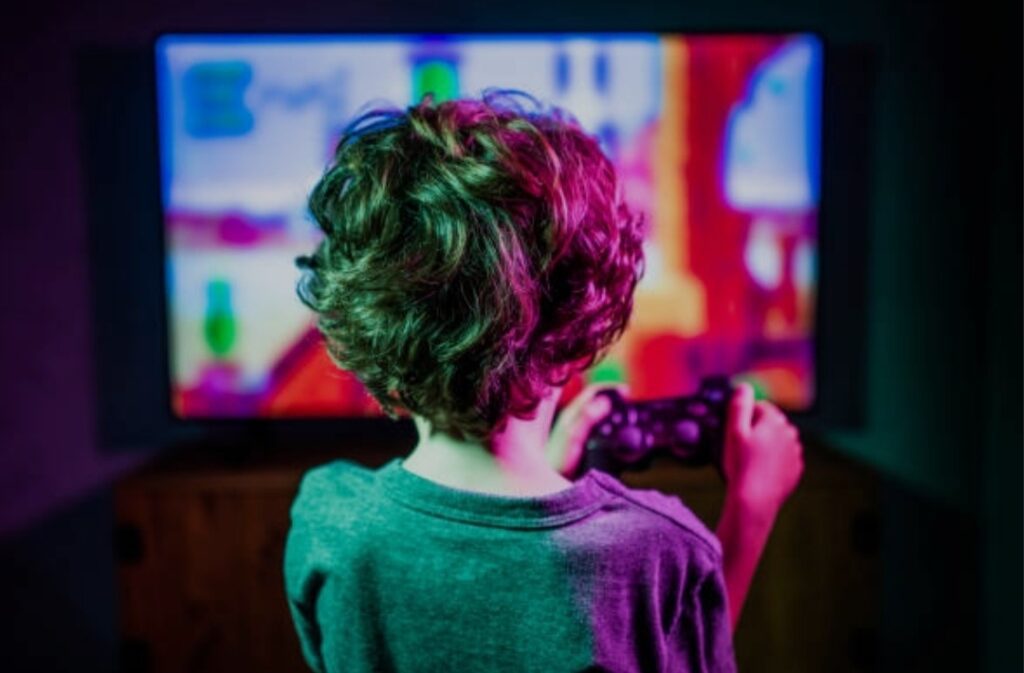
Set Clear Guidelines and Be a Role Model
Children learn by observing their parents.
If you want your child to develop healthy screen habits, you must lead by example.
Setting clear rules and demonstrating balanced screen use will help create a positive digital environment.
Establishing Screen Time Rules for Children
✅ Define daily screen limits: Set clear guidelines on how much time children can spend on screens each day.
✅ Differentiate between types of screen use: Limit recreational screen time while allowing educational content.
✅ Enforce digital curfews: Establish screen-free periods, especially before bedtime.
✅ Limit device usage in bedrooms: Keeping screens out of sleeping areas helps prevent late-night browsing.
✅ Create a family screen agreement: Write down screen time rules and have children commit to them.
The Importance of Parents Leading by Example
Children are more likely to follow rules when they see their parents practicing healthy digital habits.
As a parent, you should:
- Avoid excessive phone use during family time.
- Prioritize face-to-face conversations over digital interactions.
- Take screen breaks to show that offline activities are just as enjoyable.
- Use technology mindfully and limit mindless scrolling.
When children see their parents practicing balanced screen habits, they are more likely to adopt similar behaviors.
Encourage Educational and Interactive Screen Use
Not all screen time is harmful.
Technology can be a powerful learning tool when used correctly.
Instead of completely restricting screen use, encourage children to engage with high-quality educational content.
Selecting the Best Educational Content for Children
When choosing digital content for children, look for:
✅ Interactive Learning Apps: Apps like Duolingo, ABCmouse, and Khan Academy encourage active learning.
✅ Educational Videos: Platforms like PBS Kids, National Geographic Kids, and TED-Ed provide valuable knowledge.
✅ Coding and STEM Games: Games that teach coding, math, and problem-solving skills are great for cognitive development.
✅ Audiobooks & E-Books: Digital reading can be a productive alternative to passive screen use.
The Benefits of Co-Viewing and Discussing Content
Watching and discussing digital content with your child enhances learning and strengthens parent-child bonds.
Here’s how to make screen time more interactive:
- Ask questions about what they’re watching or playing.
- Relate digital content to real-life experiences.
- Encourage critical thinking by discussing different perspectives.
- Guide them towards age-appropriate content that aligns with their interests.
By promoting educational and interactive screen use, you can ensure that children benefit from technology without becoming overly dependent on it.
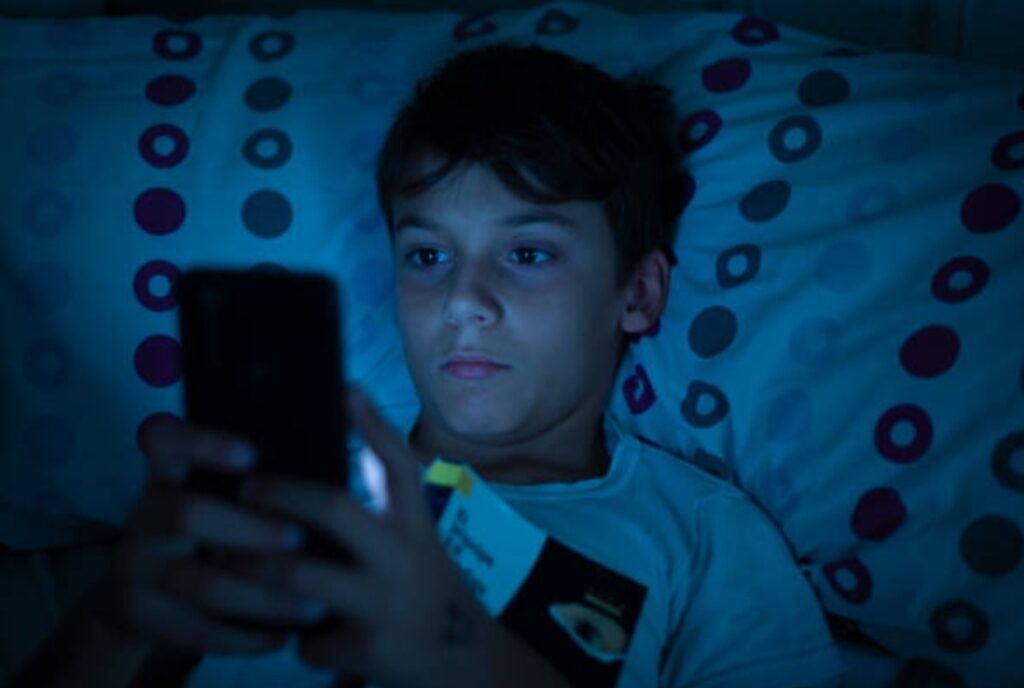
Foster Offline Activities and Social Interaction
Encouraging children to participate in offline activities helps reduce screen dependence and promotes a more active lifestyle.
Creating Opportunities for Screen-Free Play and Socialization
To reduce screen time, introduce children to engaging real-world activities, such as:
✅ Outdoor Sports: Playing soccer, basketball, or riding a bike keeps kids active.
✅ Creative Arts & Crafts: Drawing, painting, or building DIY projects helps develop creativity.
✅ Board Games & Puzzles: These activities improve problem-solving skills and encourage family bonding.
✅ Reading Physical Books: Encourage a love for reading with engaging storybooks.
✅ Music & Dance: Learning an instrument or dancing is a fun alternative to screen time.
The Importance of Unstructured Playtime
Children need time for free, imaginative play that is not structured by screens or digital devices.
Benefits of screen-free playtime include:
- Boosting creativity and independent thinking.
- Improving problem-solving and social skills.
- Encouraging physical activity and reducing sedentary behavior.
- Helping children develop real-world interests beyond screens.
Encourage children to explore their surroundings, play with friends, and participate in outdoor adventures.
These activities not only reduce screen time but also contribute to healthier physical and mental development.
Helping Children Develop Healthy Digital Habits
Managing children’s screen time is not about banning technology but about teaching responsible usage.
By setting clear guidelines, promoting educational screen time, and encouraging offline activities, parents can help children build healthy digital habits.
✅ Start today! Create a family plan and introduce fun, screen-free activities to keep your child engaged and balanced.
Leveraging Technology to Control Screen Time
With digital devices becoming an integral part of everyday life, managing screen time can feel like a daunting task.
Fortunately, technology itself offers powerful solutions to help parents and individuals set boundaries, track usage, and develop healthier digital habits.
From built-in device features to third-party apps, there are various tools available to help you manage screen time effectively.
By using these tools wisely, you can create a balanced approach to technology use without feeling overly restrictive.
Let’s explore the best technology-based methods to control screen time efficiently.

Utilize Built-In Device Features
Most modern smartphones, tablets, and computers come with built-in screen time management tools that allow users to monitor, set limits, and control their digital consumption.
These features help parents manage their children’s screen time while also enabling individuals to regulate their own device usage.
Apple’s Screen Time – A Comprehensive Digital Wellbeing Tool
Apple offers a built-in Screen Time feature on iPhones, iPads, and Macs.
This tool provides detailed insights into daily and weekly screen usage, along with customizable settings to limit distractions and promote healthier habits.
Key features of Apple’s Screen Time:
✅ App Limits: Set time restrictions for specific apps, such as social media or gaming apps.
✅ Downtime: Schedule screen-free periods to encourage offline activities.
✅ Content & Privacy Restrictions: Block inappropriate websites, apps, or purchases.
✅ Family Sharing Controls: Parents can monitor and adjust their child’s screen time settings remotely.
✅ Real-Time Usage Reports: Get detailed analytics on how much time is spent on each app.
To enable Screen Time on an Apple device:
- Go to Settings
- Tap Screen Time
- Customize restrictions and limits based on your needs
This feature is particularly helpful for parents who want to ensure their children maintain a healthy relationship with technology.
Android’s Digital Wellbeing – Balancing Screen Time for Better Focus
Android users can take advantage of Digital Wellbeing, a feature designed to promote mindful technology use.
Key benefits of Digital Wellbeing include:
✅ Dashboard Analytics: Get real-time reports on app usage and screen time patterns.
✅ Focus Mode: Temporarily disable distracting apps to improve productivity.
✅ Bedtime Mode: Reduces blue light and silences notifications before bedtime.
✅ App Timers: Set daily limits on apps to prevent excessive usage.
✅ Parental Controls: Monitor and restrict children’s device usage through Google Family Link.
To enable Digital Wellbeing on an Android device:
- Open Settings
- Select Digital Wellbeing & Parental Controls
- Customize screen time settings based on personal or family needs
Both Apple’s Screen Time and Android’s Digital Wellbeing offer built-in tools to encourage a more mindful approach to technology use.
These features provide a great starting point for anyone looking to limit screen time without needing additional apps.
Explore Third-Party Apps for Enhanced Screen Management
While built-in features are useful, third-party screen time management apps offer additional customization, flexibility, and advanced tracking options.
These apps are ideal for parents, professionals, and individuals who need extra tools to regulate their screen time effectively.
The Best Screen Time Management Apps for Families & Individuals
Here are some of the most effective apps designed to help control screen time:
✅ Qustodio: A powerful parental control app with time limits, content filtering, and activity reports.
✅ Freedom: Blocks distracting websites and apps to improve focus and productivity.
✅ Forest: Uses gamification to encourage users to stay off their phones by growing a virtual tree.
✅ OurPact: Allows parents to schedule screen-free times and remotely control their child’s device.
✅ Moment: Provides screen time tracking and mindfulness coaching to help users reduce digital addiction.
How Effective Are Screen Time Management Apps?
Third-party apps offer several advantages over built-in features:
- Cross-Device Synchronization: Manage screen time across multiple devices (phones, tablets, and computers).
- More Detailed Insights: Gain deeper analytics on app usage patterns.
- Remote Monitoring: Parents can control children’s devices from their own phones.
- Enhanced Website & App Blocking: Some apps provide stronger restrictions than built-in settings.
However, there are some limitations to consider:
❌ Subscription Costs: Many premium features require paid subscriptions.
❌ Workarounds: Tech-savvy children may find ways to bypass certain restrictions.
❌ Privacy Concerns: Some apps collect user data, so always check privacy policies before installing.
While no app is 100% foolproof, using a combination of built-in tools and third-party apps can significantly help in managing screen time effectively.
Using Technology to Build Healthier Screen Habits
Technology can be both a problem and a solution when it comes to screen time.
By leveraging built-in device features and third-party apps, parents and individuals can develop a structured approach to screen management.
✅ Start today! Explore your device’s screen time settings and test out apps that align with your digital wellness goals.
Overcoming Challenges in Reducing Screen Time
In today’s digital-first world, reducing screen time is easier said than done.
From remote work demands to social media pressures, various factors make it challenging to unplug.
However, with the right strategies and mindset, it is possible to develop a healthier relationship with technology.
This section will explore two major obstacles people face when trying to cut back on screen use and provide practical solutions to overcome them.

Addressing Screen Time in Remote Work
Remote work has blurred the lines between professional and personal life, leading to excessive screen exposure.
Employees often find themselves glued to their screens for long hours, making it difficult to take breaks.
While digital tools are essential for productivity, it’s crucial to find ways to manage screen time effectively without compromising work performance.
Practical Tips to Balance Screen Time While Working Remotely
✅ Follow the 20-20-20 Rule
Every 20 minutes, take a 20-second break and look at something 20 feet away.
This helps reduce eye strain and prevents digital fatigue.
✅ Schedule Screen-Free Breaks
Use a Pomodoro timer or set alarms to remind yourself to step away from your screen.
Short 5–10-minute breaks between tasks can help maintain focus and reduce mental exhaustion.
✅ Use Blue Light Filters
Long hours in front of screens can cause eye strain and sleep disruption.
Enable night mode or use blue light-blocking glasses to minimize exposure to harmful light.
✅ Set Clear Work Boundaries
Define working hours and avoid using work devices outside of this time.
For instance, disable email notifications after work hours to prevent burnout.
✅ Encourage Offline Productivity
Print important documents to read away from the screen.
Use handwritten notes for brainstorming instead of typing everything digitally.
By implementing these strategies, remote workers can stay productive while ensuring their screen time remains balanced and healthy.
Dealing with Social Pressures and FOMO (Fear of Missing Out)
Social media has transformed the way we connect, but it also fuels digital addiction.
The constant stream of updates, news, and notifications can create a compulsive need to stay online.
Many people experience FOMO (Fear of Missing Out)—a psychological phenomenon where individuals feel anxious about not being connected to social events or online trends.
To reduce screen dependence, it’s essential to develop mindful habits that prioritize real-life interactions and mental well-being.
How to Manage Social Media Use and Reduce FOMO
✅ Set Social Media Limits
Use built-in app timers to restrict daily social media usage.
Start with small reductions, like cutting back 15–30 minutes per day.
✅ Turn Off Non-Essential Notifications
Disable push notifications for non-urgent apps.
This helps reduce the urge to check your phone every few minutes.
✅ Practice Intentional Social Media Use
Before opening an app, ask yourself:
“Am I here for a specific purpose, or am I just scrolling mindlessly?”
✅ Curate Your Feed for Positive Impact
Unfollow accounts that trigger anxiety or negatively affect mental health.
Instead, follow pages that provide educational or inspiring content.
✅ Schedule Screen-Free Social Time
Engage in face-to-face interactions without screens.
Plan activities like dinners, hikes, or hobbies where technology isn’t the focus.
✅ Try a Digital Detox Challenge
Dedicate one day per week to a no-social-media challenge.
This can reset your habits and show you that life exists beyond screens.
By making these small but impactful changes, you can break free from the cycle of FOMO and reclaim control over your screen time.
Taking Charge of Your Screen Time
Reducing screen time is a journey, not an overnight change.
By setting realistic goals and using practical strategies, you can develop a healthier relationship with technology.
✅ Start small! Choose one or two habits to implement today and gradually build on them.
✅ Prioritize your well-being! Screen time should enhance your life—not control it.
Monitoring Progress and Adjusting Habits
Reducing screen time is a continuous journey, not a one-time fix.
It requires regular monitoring, adjustments, and self-reflection to ensure long-term success.
By tracking progress, making necessary changes, and staying motivated, you can develop a sustainable digital balance that fits your lifestyle.

Reflecting on Screen Time Changes
One of the most effective ways to manage screen time effectively is to regularly analyze your progress.
By reviewing your screen time reports, you can identify patterns, setbacks, and areas for improvement.
How to Track and Evaluate Your Screen Time Usage
✅ Use Built-In Digital Wellbeing Tools
- Both iOS (Screen Time) and Android (Digital Wellbeing) offer detailed usage reports.
- These tools show which apps consume the most time and how often you unlock your phone.
✅ Review Weekly and Monthly Trends
- Set a reminder to check your screen time stats at the end of each week.
- Analyze whether you’re spending more or less time on unnecessary apps.
✅ Identify Triggers and Distractions
- Ask yourself:
- What triggers my excessive screen use?
- Do I scroll mindlessly when I’m bored, stressed, or procrastinating?
- What triggers my excessive screen use?
✅ Adjust Goals Based on Your Data
- If your screen time hasn’t improved, revise your strategy.
- Consider setting app limits or using focus modes to stay disciplined.
Regular reflection helps you stay accountable and ensures your efforts lead to real changes.

Celebrating Successes and Staying Motivated
Reducing screen time can feel like a big lifestyle shift, so it’s important to acknowledge your wins.
Celebrating progress keeps you motivated and encourages long-term consistency.
Ways to Reward Yourself for Reducing Screen Time
✅ Set Milestones and Small Rewards
- Example: If you reduce screen time by 30 minutes per day, treat yourself to a coffee or a book.
✅ Share Your Success with Friends
- Let others know about your progress.
- Join online support groups or challenges to stay accountable.
✅ Replace Screen Time with Fulfilling Activities
- Use freed-up time for hobbies, workouts, or self-care.
- This makes the transition feel rewarding rather than restrictive.
✅ Visualize Your Progress
- Use a habit tracker or journal to log improvements.
- Seeing progress on paper boosts motivation.
✅ Stay Flexible and Keep Improving
- If you relapse, don’t be discouraged!
- The key is to stay aware, make small adjustments, and keep going.
By combining self-reflection, adjustments, and motivation, you can successfully develop a healthier relationship with screens—for life!
Conclusion – Why Managing Screen Time Matters
In today’s digital age, screens have become an essential part of our daily lives.
From work and education to entertainment and socializing, we rely on screens for nearly everything.
However, excessive screen time can negatively impact physical health, mental well-being, sleep quality, and overall productivity.
That’s why learning how to manage screen time effectively is crucial for leading a balanced and fulfilling life.
By taking proactive steps to limit unnecessary screen exposure, you can experience a range of benefits, including:
✅ Better Physical Health – Reduced eye strain, fewer headaches, and less risk of posture-related issues like neck and back pain.
✅ Improved Mental Well-Being – Lower stress levels, reduced anxiety, and improved focus.
✅ Higher Productivity – Less distraction from digital devices leads to better time management and efficiency.
✅ Healthier Sleep Patterns – Cutting back on screen use before bedtime improves sleep quality.
✅ Stronger Real-Life Connections – Less screen time means more opportunities for meaningful in-person interactions.

Taking the First Step Toward a Healthier Digital Life
The journey to reducing screen time starts with small, intentional changes.
Rather than eliminating screen use entirely, focus on creating healthier digital habits that align with your lifestyle.
Here’s what you can do right now:
✅ Set Realistic Goals – Decide how much screen time is appropriate for your daily routine.
✅ Use Digital Wellbeing Tools – Track and monitor your progress with screen time apps.
✅ Prioritize Offline Activities – Engage in hobbies, exercise, or social outings to reduce the urge to stay glued to screens.
✅ Establish Screen-Free Zones – Designate areas in your home, such as the bedroom or dining table, where screens are off-limits.
✅ Practice Mindful Screen Use – Be intentional about when and why you use screens, rather than scrolling out of habit.
Stay Committed and Keep Improving
Building healthy screen habits is an ongoing process.
Some days will be easier than others, but the key is to stay consistent and motivated.
Whenever you find yourself struggling with digital overuse, remind yourself why reducing screen time matters.
Celebrate small wins, and don’t hesitate to adjust your strategies if needed.
Most importantly, don’t feel guilty about using screens when necessary—technology is a tool meant to enhance your life, not control it.
By maintaining a mindful approach, you can enjoy the benefits of technology without becoming overly dependent on it.
Ready to Take Control of Your Screen Time?
Now is the time to take action!
➡ Start today by implementing just one or two of the strategies mentioned in this guide.
➡ Challenge yourself to go screen-free during certain hours of the day.
➡ Encourage your friends and family to join you in creating a healthier relationship with technology.
By making small, consistent changes, you’ll be on your way to a happier, healthier, and more productive lifestyle—one where technology serves you, rather than the other way around.
So, what are you waiting for?
Take charge of your digital habits today and reclaim control over your time!
You might also like :

